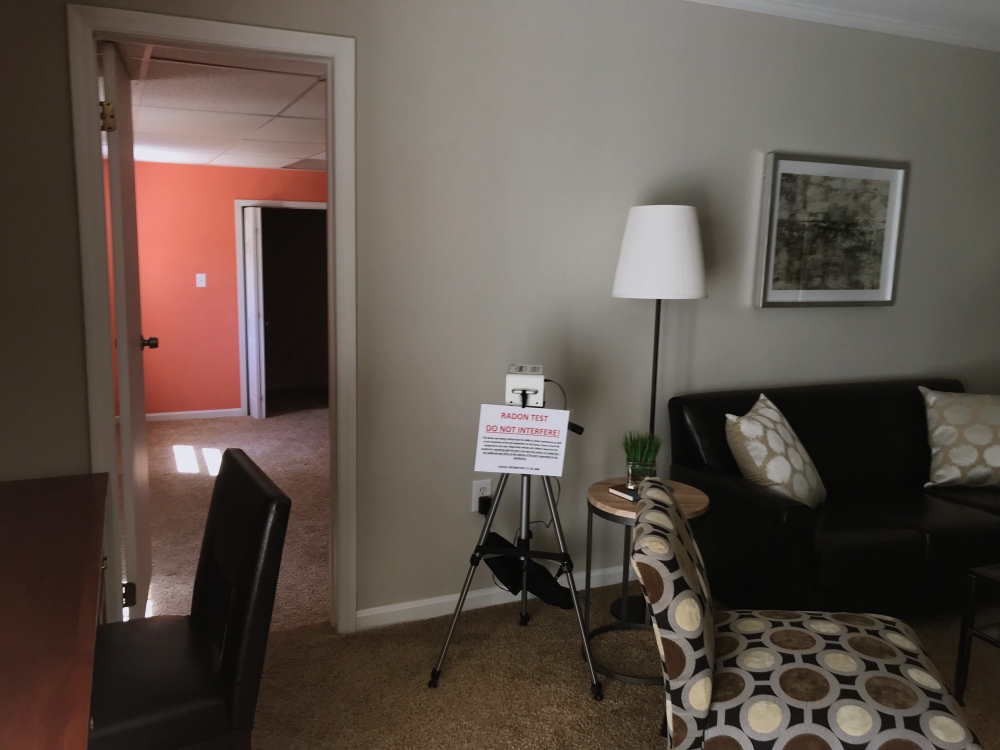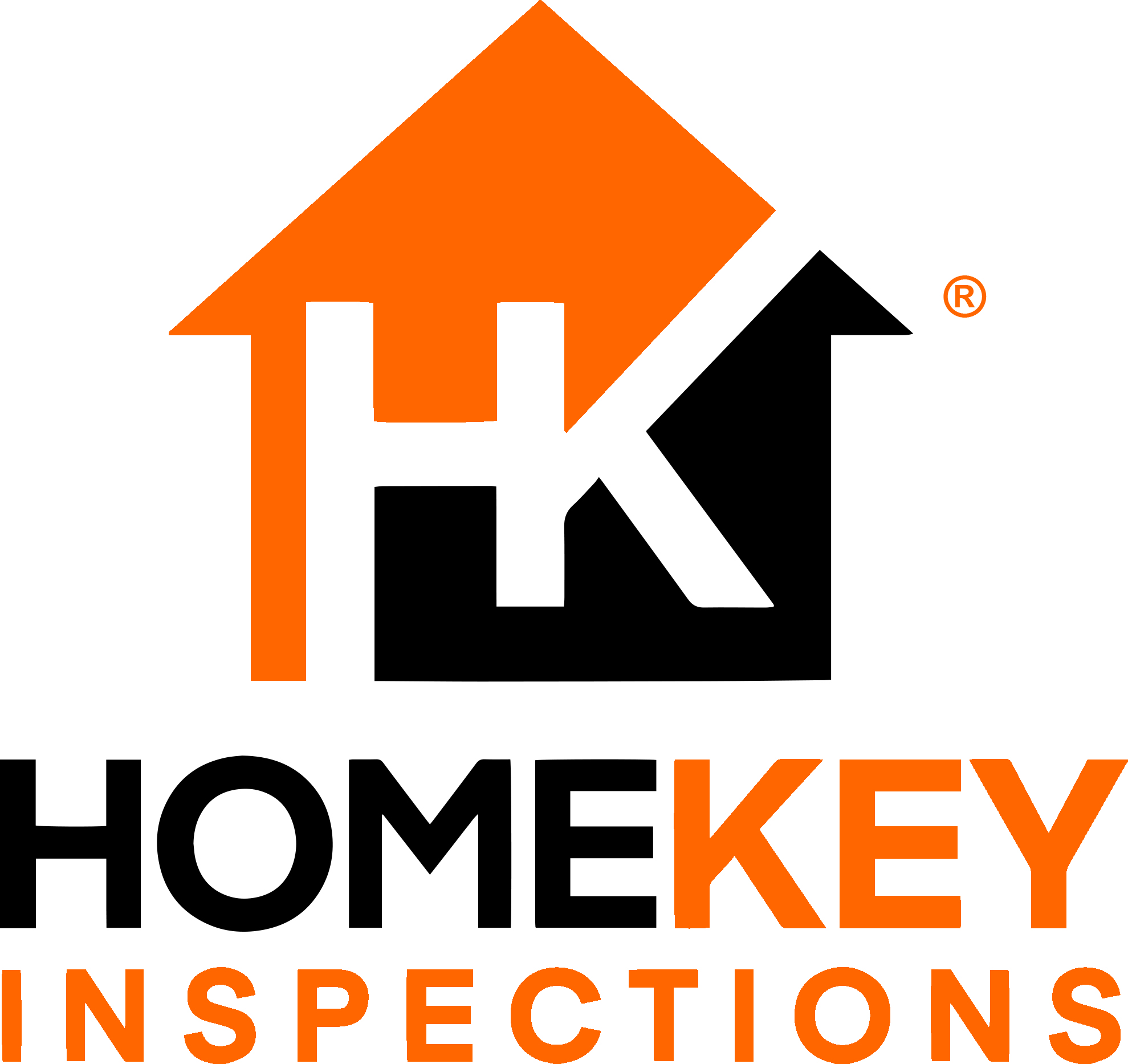Why You Should Test for Radon in Your Home
There are unsafe levels of radon in one of every fifteen homes across the country. That’s about 7% of all homes!
So, what are the dangers involved? Radon has been shown to be one of the leading causes of lung cancer, second only to smoking. We strongly encourage ALL homeowners to have a professional radon test performed, regardless of whether or not there is a real estate transaction involved. We, here at HomeKey Inspections, are certified Radon Measurement Specialists by the National Radon Safety Board (NRSB). We utilize the latest technology in short term radon testing and offer on the spot/same day results once the test has been completed.

What Our Clients Say



Radon is a cancer-causing, radioactive gas.
Radon is a naturally occurring radioactive gas released in rock, soil, and water from the natural decay of uranium. While levels in outdoor air pose a relatively low threat to human health, radon can accumulate to dangerous levels inside buildings. You can’t see, smell, or taste it, but an elevated radon level in your home may be affecting the health of your family.
The U.S. Environmental Protection Agency estimates that radon causes more than 20,000 lung cancer deaths in the country each year.
Exposure to radon is the second leading cause of lung cancer in the United States and the number one cause among non-smokers. The U.S. Environmental Protection Agency estimates that radon causes more than 20,000 lung cancer deaths in the country each year. Only smoking causes more lung cancer deaths. If you smoke and your home has elevated levels of radon, your risk of lung cancer can be higher.
Radon is found all over the United States.
Radon has been found in elevated levels in homes in every state. No area of the country is free from risk. Indeed, two homes right next to each other can have vastly different radon levels. Just because your neighbor’s house does not have an elevated level of radon does not mean that your house will have a low radon level. The only way to know if your home is under the EPA action level of 4.0 pCi/L is to test.
High levels of radon in homes usually come from the surrounding soil. Radon gas enters through cracks and openings—such as sump pump lids and plumbing features—on the lower levels of your home. Hot spots include basements, first-floor rooms, and garages, but radon can be found anywhere in your house.
You should test for radon.
The U.S. Surgeon General recommends that all homes in the U.S. be tested for Radon. Testing your house for Radon is easy to do. If your house has a Radon problem, you can take steps to fix it to protect yourself and your family.
There is no easy way to predict whether or not a home will have elevated levels of radon.
Radon is a radioactive gas. It comes from the natural decay of uranium that is found in nearly all soils. It typically moves up through the ground to the air above and into your home through cracks and other holes in the foundation. Your home traps radon inside, where it can build up. Any home may have a radon problem. This means new and old homes, well-sealed and drafty homes, and homes with or without basements.
Radon from soil gas is the main cause of radon problems. Sometimes radon enters the home through well water. A good rule of thumb is if the radon in air levels are high, and the property’s water supply is from a private well, then a radon in water test should be performed. Public water supplies have very little radon due to the aeration process which allows radon to escape before entering your home. In a small number of homes, the building materials can give off radon, too. However, building materials rarely cause radon problems by themselves.
Improper installation of radon mitigation systems can still lead to elevated radon levels, even in homes where one is already installed.
Even when a radon mitigation system is installed, several common installation errors can significantly reduce its effectiveness. For example, one of the below photos shows a manometer with liquid levels that are equal, indicating a failure in the system’s depressurization—meaning the radon isn’t being properly vented out. Another issue is inadequate sealing around the edges of the basement slab, which can allow radon to bypass the system entirely. A fairly common issue is inadequate clearance of the vent termination above grade, or from penetrations (like windows). Additionally, connecting other household vents into the radon vent disrupts the system’s ability to function properly, increasing radon exposure risks. Ensuring that every component of the system is installed and maintained correctly is essential for keeping radon levels safely low.
Why Choose HomeKey Inspections for Your Radon Test
- We are Certified Radon Measurement Specialists by the NRSB (National Radon Safety Board) or NRPP.
- Our machines take hourly measurements and include the overall average with a detailed graph.
- Our machines can detect interference with a built-in motion sensor.
- We can read the machine on site and give the results immediately.
- The report is emailed same day in PDF format.

Common Radon Myths
Rn
Fact: Radon can be a problem in homes of all types: old homes, new homes, drafty homes, insulated homes, homes with basements, homes without basements and homes with lots of windows. Local geology, construction materials, and how the home was built are among the factors that can affect radon levels in homes.
Fact: Radon levels can vary greatly from home to home. One house can have little to no radon, whereas the house next to it might have very high and unsafe levels of radon. The only way to know if your home has a radon problem is to test it.
Fact: High radon levels have been found in every state, including Northern Virginia and Washington D.C.. Radon problems do vary from area to area, but the only way to know your radon level is to test.
How to Lower the Radon Levels in Your Home
There are several ways to lower radon levels, however the most common method is called a “Sub Slab Depressurization System”. This system involves two main components, a vent pipe and a fan. The contractor will drill a large hole that goes through the slab, which is where the vent pipe will be installed. If the property has a sump pump present, then the contractor will most likely convert the sump pump to be part of the radon mitigation system as well. Sealant is applied around the pipe where it penetrates the slab, as well as to any other penetrations or cracks in the slab. If the sump pump is included in the mitigation system, then the crock lid/cover will be permanently secured, and all penetrations/edges sealed. The pipe is then vented to the exterior. The next step is to create the “depressurized” condition which will draw the radon gas into the vent pipe. To do this, a fan is installed inside the pipe (the circuit to which this fan is wired must be labeled as part of the radon system). Once the system is installed, another radon test needs to be performed to determine if the mitigation system has lowered the radon to acceptable levels. The test should take place at a minimum of 24 hours after the radon reduction system is installed, but no longer than 30 days from the installation.

